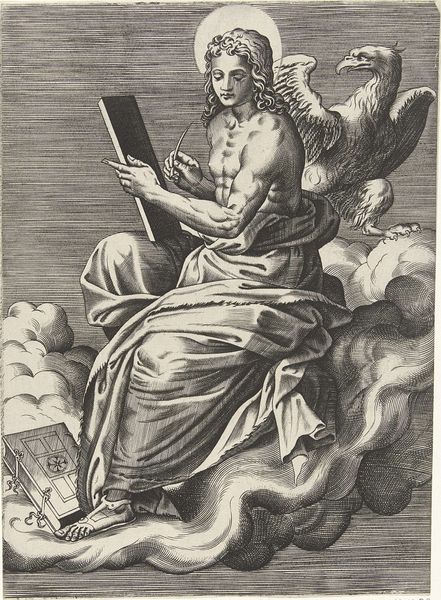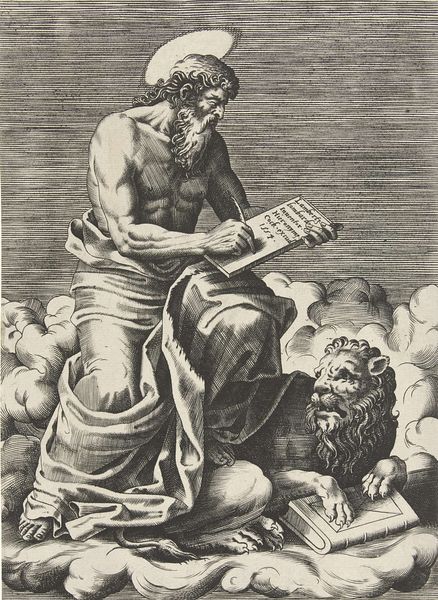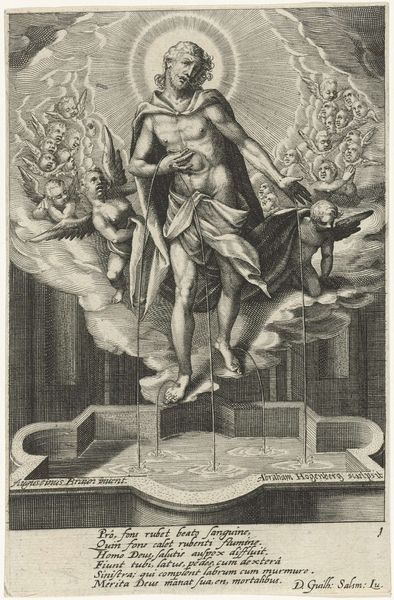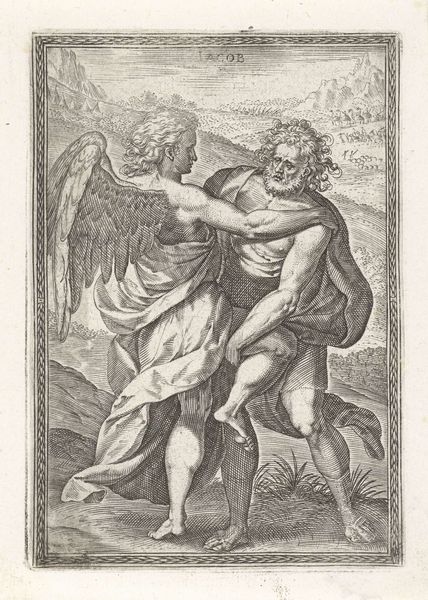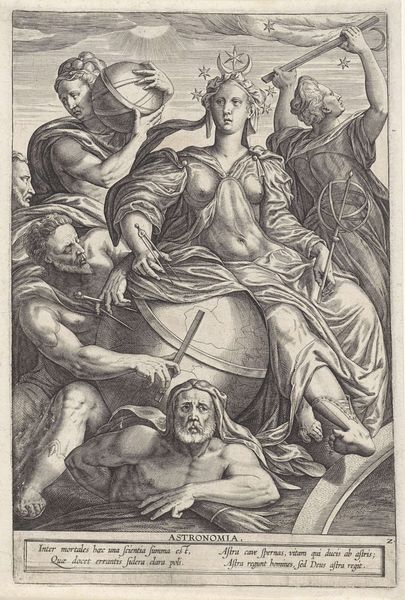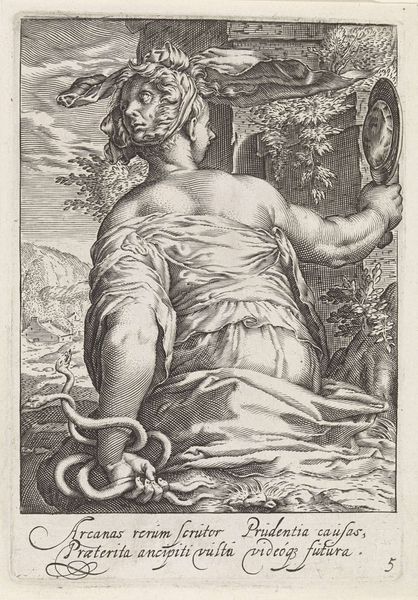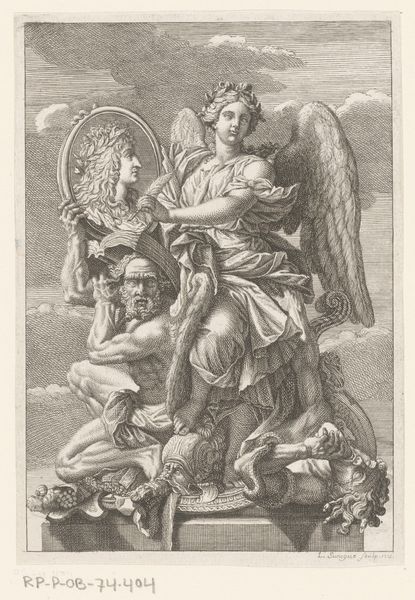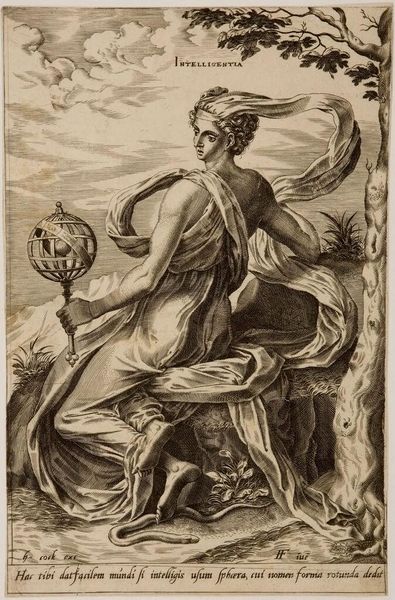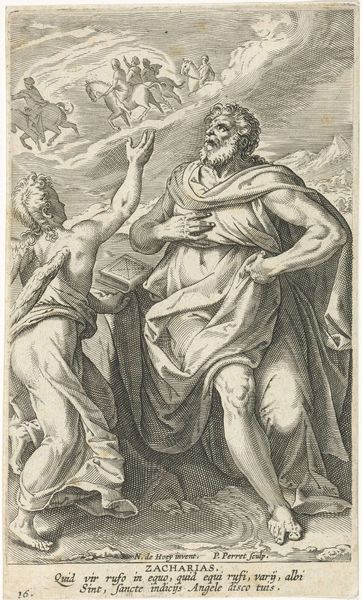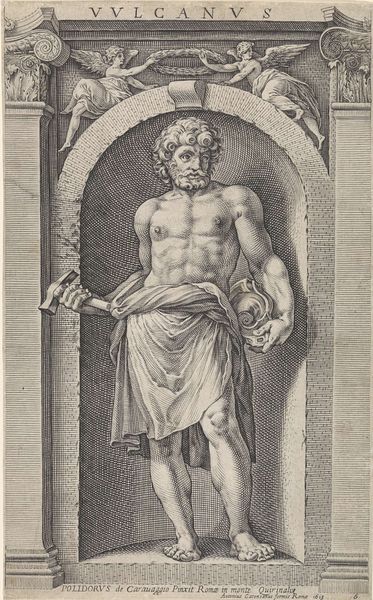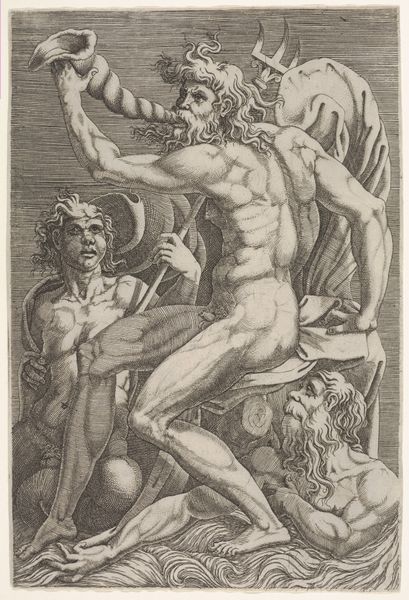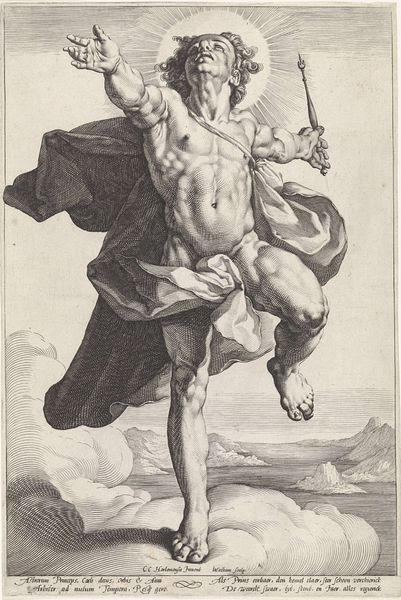
print, engraving
#
portrait
# print
#
figuration
#
11_renaissance
#
line
#
history-painting
#
northern-renaissance
#
engraving
Dimensions: height 203 mm, width 150 mm
Copyright: Rijks Museum: Open Domain
Curator: Look at this print; Pieter van der Heyden created "Matteüs de evangelist" in 1554. The medium is engraving. What catches your eye? Editor: The sheer intensity of the line work. The figure of Matthew feels almost sculpted from hatching and cross-hatching. The lines define form and create volume in the robes and in the clouds, offering stark contrasts that must have been intentional, serving purposes beyond purely decorative effect. Curator: Absolutely, consider how printmaking, especially engraving, impacted the mass dissemination of religious imagery during the Reformation. Images like these shaped religious and political identities and sparked social debates in ways previously unseen. Editor: It’s a compelling visualization of divine inspiration. Observe the angel at his back. The angel's gentle encouragement is almost tactile – how the scene implies inspiration and its connection to labour. One might consider where these were hung, the costs of prints, and which segments of the public had access to it. How would having a depiction like this impact one's status and feeling toward social structures? Curator: Well, the engraving technique itself is labor-intensive, demanding incredible skill and time. Each line is physically etched into the metal plate, so there’s a strong element of craft. Did workshops rely on division of labor, where some specialists may etch clouds or angels? This highlights an artistic process steeped in skilled manual work. Editor: It's interesting you mention that. The institutional context shaped production: prints were commercial objects disseminated across different regions, used for private devotion but also for propaganda. They really democratized the visual field, providing a potent medium in cultural struggles and shaping public sentiment. Curator: Ultimately, "Matteüs de evangelist" demonstrates that art extends beyond aesthetics. The techniques used speak to a dialogue about labor, craftsmanship and social standing. It highlights the complex material conditions inherent in early printmaking practices. Editor: Precisely, and analyzing the socio-historical context enriches our understanding of the artwork, highlighting print’s powerful ability to mold collective consciousness within specific ideological struggles of the period.
Comments
No comments
Be the first to comment and join the conversation on the ultimate creative platform.
